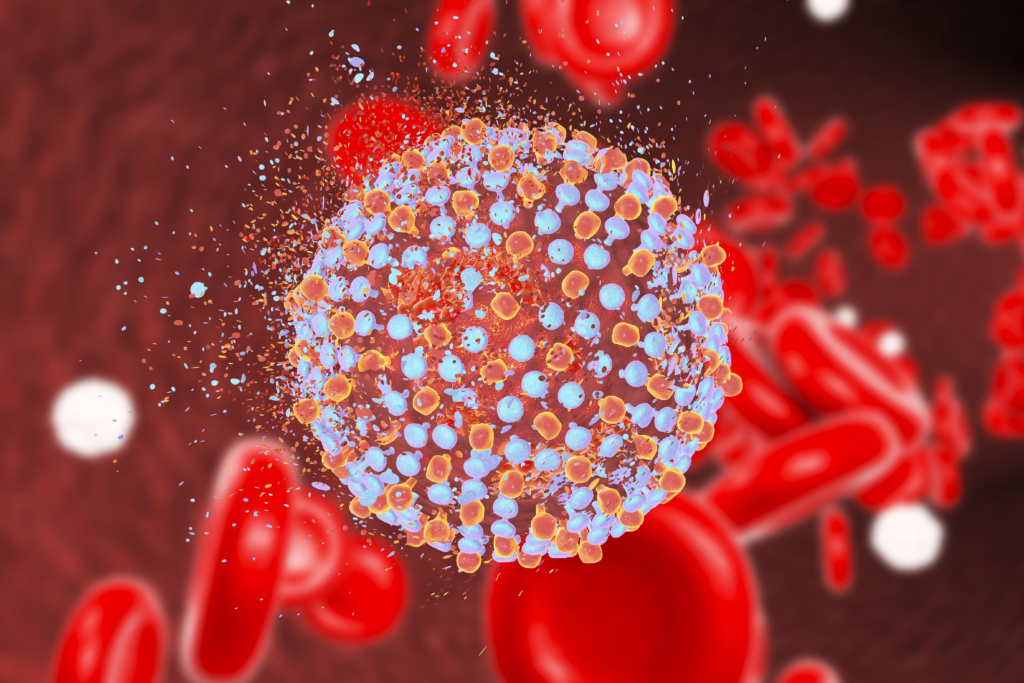Illuminating article here “Curing Hepatitis C: Louisiana’s Subscription Model Sets New Public Health Standard” from Devdiscourse.
Louisiana’s has an innovative subscription-based model for hepatitis C treatment, and is significantly increased diagnoses and cures while reducing mortality, liver transplants, and overall healthcare costs. The initiative is financially sustainable and represents a potential repeatable rubric for all US states.

“Curing Hepatitis C: Louisiana’s Subscription Model Sets New Public Health Standard
Louisiana’s subscription-based model for hepatitis C treatment dramatically increased diagnoses and cures while reducing mortality, liver transplants, and overall healthcare costs. The initiative proves financially sustainable and offers a potential blueprint for national public health policy.
In a groundbreaking partnership between the Louisiana Department of Health and pharmaceutical firm Asegua Therapeutics, researchers from Miami University, Ohio University, and the University of Delaware have delivered a compelling case study in how innovation in drug pricing can reshape public health. The initiative, examined in a National Bureau of Economic Research (NBER) working paper, introduces a first-of-its-kind subscription-based payment model for hepatitis C treatment. The results suggest not only dramatic improvements in health outcomes but also strong fiscal efficiency, laying the groundwork for a potential nationwide rollout.
A Deadly Virus, A Breakthrough Cure But at a Cost
Hepatitis C (HCV), a chronic liver infection spread primarily through blood exposure, affects millions of Americans and poses a particularly severe burden on incarcerated and low-income populations. With cure rates above 95%, direct-acting antivirals (DAAs), introduced in 2013, revolutionized treatment. But the catch was the price: early regimens cost up to $84,000 per course. Despite some price reductions over time, cost barriers remained, especially for cash-strapped Medicaid programs, which often rationed access to the sickest patients only. Early treatment—although more effective and cost-saving long-term—was often out of reach. Louisiana’s 2019 response was radical: it negotiated a five-year deal with Asegua for unlimited access to a generic version of Epclusa in exchange for a fixed annual fee equal to the state’s 2018 Medicaid hepatitis C spending. The deal eliminated marginal treatment costs, creating a powerful incentive to test and treat aggressively.
Diagnosis and Treatment Skyrocket Under the New Model
The effects of the Louisiana Hepatitis C Elimination Plan (LAHCEP) were swift and substantial. The number of diagnosed HCV cases jumped by over 3,300% in 2020 and over 4,000% in 2021, a testament to a massive increase in testing efforts. Although there was a slight decline in 2022, researchers attribute this to diminishing marginal returns: most of the easily reachable HCV-positive population had likely already been identified. Meanwhile, prescriptions for DAAs under Medicaid surged. Louisiana went from just 1.5 prescriptions per 1,000 Medicaid patients in 2018 to 4.8 in 2019 and 5.5 in 2020—an increase of more than 260% and 560%, respectively. The state filled over 30,000 prescriptions by the end of the program’s fourth year, reaching about 67% of the estimated HCV-infected population. If treatment continues at that pace, Louisiana will reach roughly 78% coverage by the end of 2024, closely matching its original goal of curing 80% of infected individuals.
Lives Saved, Organs Spared: Mortality and Transplants Decline
The public health benefits extended well beyond testing and prescriptions. HCV-related mortality dropped by 11–13% between 2019 and 2022, translating to roughly 300–400 lives saved in the early years of the program. These reductions are particularly notable given the slow progression of HCV many patients take years to develop fatal complications, so the most dramatic mortality improvements are likely still ahead. Moreover, demand for liver transplants, one of the costliest consequences of advanced hepatitis C, fell by 27%. MELD scores used to assess liver function in transplant candidates—also improved by 6.5%, suggesting better liver health across the board. These outcomes underscore not just lives saved but substantial reductions in healthcare utilization and spending.
A Fiscal Win: Public Funds Are Paying Off
One of the most striking findings from the NBER study is the program’s financial viability. Using conservative assumptions, the authors calculated that if Louisiana conducted 1.4 million HCV tests at $60 each, total surveillance costs would approach $83 million. To break even, each additional patient treated would need to save $4,150 in future medical expenses. But previous studies show Medicaid saves nearly $16,000 annually per cured patient well above the breakeven point. Crucially, these figures don’t even account for the economic value of lives saved or transmission prevented. The researchers conclude that the Marginal Value of Public Funds (MVPF) for LAHCEP is “very large,” and the program easily pays for itself through avoided downstream costs.
A Model for the Nation?
With endorsement from the Biden administration, discussions about a national hepatitis C elimination initiative have gained traction. Louisiana’s results provide a data-rich foundation for scaling such a policy. The success of the LAHCEP illustrates how subscription models also known as two-part tariffs can be effective public policy tools, especially in pharmaceutical markets where marginal costs are low but list prices remain high due to market concentration. Louisiana’s negotiation succeeded because the state was able to leverage competition among a small group of manufacturers offering interchangeable DAAs. By securing exclusive access and capping total spending, Louisiana reversed disincentives that had long stifled testing and treatment.
While Louisiana’s program is context-specific, the broader implications are clear: innovation in drug pricing can unlock widespread access, improve public health, and reduce long-term costs. It also demonstrates how a single state can drive national conversation through policy leadership and rigorous evaluation. If replicated at scale, such a model could not only cure hundreds of thousands but also fundamentally shift how the U.S. approaches high-cost chronic diseases. The question now is whether other states or the federal government are willing to subscribe to this bold vision.”
